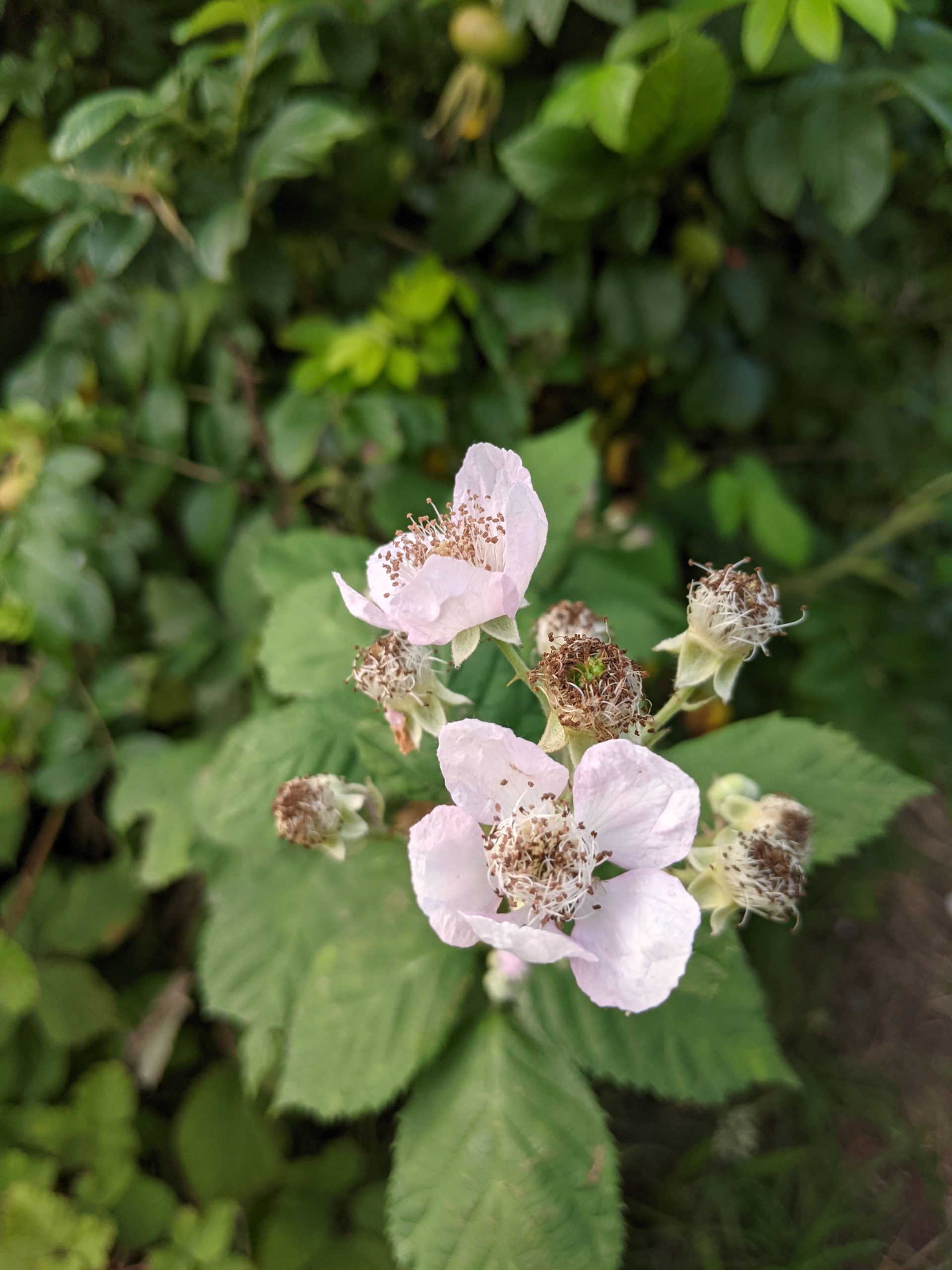Himalayan Blackberry is a very large blackberry that produces robust arching 5-angled canes that reach up to 3 m in height and 12 m in length. Canes have large hooked or straightened thorns and can root at the tips. It has large leaves that are palmate compound with 3-5 toothed leaflets. Thorns can also be found along the leaf underside. Its flowers are 2.5 cm wide, white to pinkish in colour and produce large blackberries. This species blooms throughout the summer and commonly has both fruit and flowers at the same time. It can be distinguished from native blackberries by its immense size, the presence of dense white hairs on the underside of leaves on the flowering canes, and leaves that remain on the shrub throughout the winter months.
Can be found growing in a variety of habitats including disturbed sites, along roadways, pastures, forest edges, and riparian areas. It prefers full sunlight but can establish itself in low-light habitats. It rapidly outcompetes native vegetation for resources, reducing native plant biodiversity. The large dense thorny thickets are impenetrable and limit the movement of large animals.
Himalayan blackberry is native to Eurasia and was brought to North America in the 1800s as an agricultural berry crop. It spreads by seeds and by root fragmentation. Birds eat its berries and disperse the seeds at great distances.

Aenean malesuada neque sapien, id auctor leo vestibulum sit amet. Nullam dignissim luctus justo vitae pulvinar. Ut egestas porta mauris vulputate tempus. Aenean mattis urna in arcu viverra sollicitudin. Duis risus mi, mattis eget placerat vel, finibus ut sapien. Maecenas scelerisque lacus eget neque laoreet, in semper dolor rutrum.
Large arching canes with thorns, abundant white to pinkish flowers, and the leaves on flowering canes have dense white hairs on the underside.




Despite its name, it is not native to the Himalayan region.
Promote the use of beautiful, non-invasive shrubs for gardening and landscaping. If you spot this invasive species, report the location to iNaturalist, or directly to the NSISC.